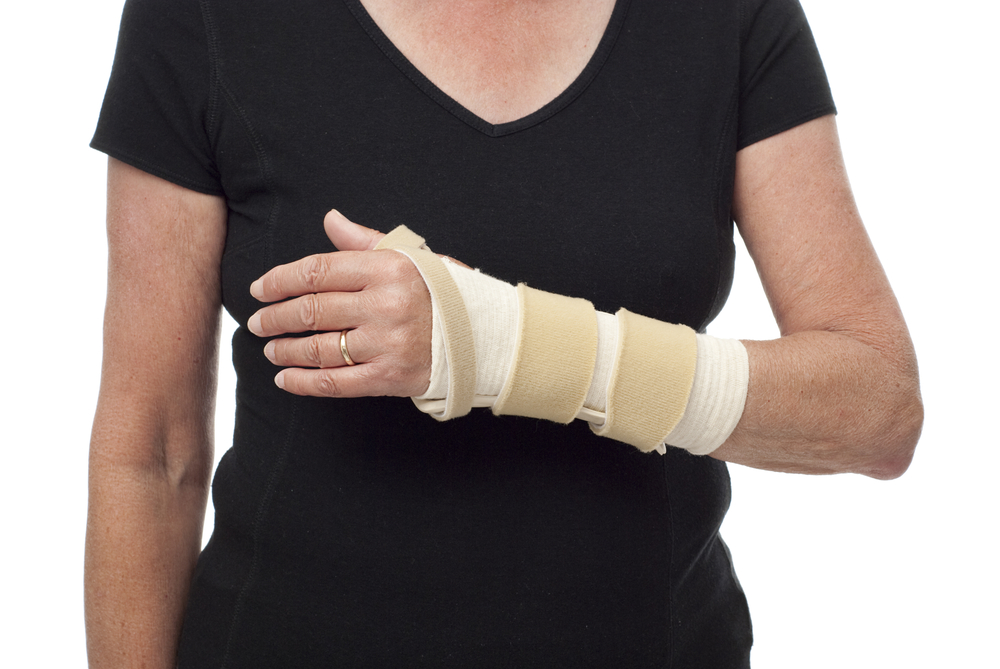What Are the Signs of Carpel Tunnel Syndrome?

Question: I spent many hours at my computer and got this awful pain in my forearm that made me stop. Do you think I have carpal tunnel syndrome?
Answer: I'm not qualified to diagnose, so I suggest that, if that pain persists, you see a physician and get it checked. However, I can tell you about carpal tunnel syndrome.
The median nerve runs from the forearm into the hand. This nerve controls impulses to the palm side of the thumb and fingers, but not the pinky. The median nerve goes through the carpal tunnel, which is a narrow opening at the base of the hand.
When tissues in the carpal tunnel, such as ligaments and tendons, get swollen or inflamed, they press against the median nerve.
If the nerve is compressed, you can suffer the following symptoms:
- Pain in the wrist, palm or forearm
- Numbness or tingling in the hand and fingers
- Worse symptoms at night than during the day
- Intensified pain when you use your hand
- Thumb weakness
- Difficulty gripping
Symptoms usually start gradually, often at night because many people sleep with flexed wrists that compress the median nerve. Some with the syndrome say they wake up with a need to shake their hand to get relief. Others report being unable to discriminate between hot and cold with their hands.
Worse-case scenario: In chronic and untreated cases of carpal tunnel syndrome, the muscles at the base of the thumb can degenerate.
Get the world’s most fascinating discoveries delivered straight to your inbox.
Contrary to conventional wisdom, there is little data to show that repetitive movements can cause carpal tunnel syndrome. A Mayo Clinic study found that heavy computer use did not increase a person's risk of developing carpal tunnel syndrome. However, repetitive movement can cause bursitis and tendonitis.
Carpal tunnel syndrome is probably caused by inheriting a small tunnel. Other contributing factors include: a wrist fracture or sprain; a growth in the canal; rheumatoid arthritis; heavy use of vibrating hand tools; glandular problems, and fluid retention.
Carpal tunnel syndrome usually occurs only in adults. Seniors are more likely to develop the syndrome than younger people. Women are three times more likely than men to develop the disorder. Those who suffer from diabetes are also at higher risk.
The first treatment for the syndrome is rest. This includes splinting the wrist to keep it straight, which reduces stress to the median nerve.
Over-the-counter pain relievers may ease symptoms. Water pills can decrease swelling. Corticosteroids can be injected into the wrist or taken orally to relieve pressure on the median nerve.
The efficacy of acupuncture and chiropractic for carpal tunnel syndrome is unproven. However, yoga has been shown to reduce pain and improve strength.
If symptoms last for six months, surgery is often recommended. Carpal tunnel release is one of the most common surgical procedures in the United States. The majority of patients recover completely.
In the operation, a surgeon cuts the band of tissue around the wrist to reduce pressure on the median nerve. The procedure is usually same-day surgery under local anesthesia. There is a minimally invasive form of this surgery.
Occasionally the wrist loses strength from the surgery. Patients should undergo physical therapy after surgery to restore wrist strength.
Here are some tips for preventing carpal tunnel syndrome:
- Avoid bending your wrist all the way up or down.
- Relax your grip. Most people hold onto things too strenuously.
- Write with thick pens with oversized, soft grips and free-flowing ink.
- Pistol-grips on tools are better than straight-handle tools. Avoid vibrating tools, if possible.
- Don't rest your wrists on hard surfaces for long periods.
- Take breaks from repetitious hand movements.
- At a computer, adjust the height of your chair so that your forearms are level with your keyboard and mouse so you don't have to flex your wrists.
- Keep your hands warm. Wear fingerless gloves if you can't raise the temperature in your environment.
If you have a question for the Healthy Geezer, please write to fred@healthygeezer.com.
All rights reserved © 2011 by Fred Cicetti
More from the Healthy Geezer


